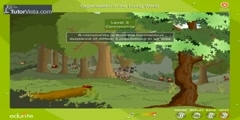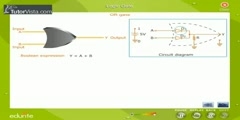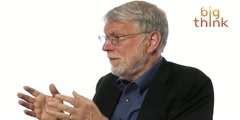Lec 17 - The Logic of a Campaign (or, How in the World Did We Win?)
"Lec 17 - The Logic of a Campaign (or, How in the World Did We Win?)"The American Revolution (HIST 116) In this lecture, Professor Freeman explains the logic behind American and British military strategy during the early phases of the Revolution. First, she discusses the logistic disadvantages of the British during the war: the difficulties shipping men and supplies from more than three thousand miles away; the vast expanse of countryside with no one central target to attack; difficulties in recruiting British soldiers to fight in America; and the fact that the British faced a citizen army comprised of highly motivated soldiers who didn't act in predictable ways. In addition, the British consistently underestimated the revolutionaries in America, and overestimated Loyalist support. Professor Freeman also discusses the four main phases of the Revolutionary War, differentiated by shifts in British strategy. During the earliest phase of the war, the British thought that a show of military force would quickly lead to reconciliation with the colonists. During the second phase, the British resolved to seize a major city - New York - in the hope that isolating New England from the rest of the colonies would end hostilities. By 1777, the war had entered its third phase, and the British set their sights on seizing Philadelphia and defeating George Washington. This phase ended with the Battle of Saratoga in late 1777. 00:00 - Chapter 1. Introduction 04:14 - Chapter 2. British Disadvantages in the War 10:39 - Chapter 3. British Assumptions of Citizen Armies and Loyalists 18:45 - Chapter 4. The First Phase: British Displays of Force 29:31 - Chapter 5. The Second Phase: Capturing New York 41:42 - Chapter 6. Third Phase: Defeating Washington and the Battle at Saratoga Complete course materials are available at the Open Yale Courses website: http://open.yale.edu/courses This course was recorded in Spring 2010.
Video is embedded from external source so embedding is not available.
Video is embedded from external source so download is not available.
Here is the next lecture for this course
The simplest motor of the world
00:20 | 7142 viewsMicroscopic World
03:15 | 7386 viewsPreserving biodiversity to helping the world
11:46 | 5747 viewsHow could the world forget Nikola Tesla!
09:54 | 7827 viewsHawaii one of the dirtiest beaches in the ...
02:25 | 5588 viewsNatural World the Coyote predators by BBC
02:27 | 6678 viewsGroupings In The Living World
04:11 | 3930 viewsWorld 's Natural Ecosystem
05:37 | 9110 viewsSixty symbols video on world's smallest m ...
08:11 | 2901 viewsLogic Gate
04:39 | 2794 viewsLec 13 - The Origins of World War I
45:52 | 2920 viewsLec 23 - Collaboration and Resistance in ...
45:30 | 3534 viewsLec 23 - The Logic of Science
45:35 | 2766 viewsJohn Seely Brown on What We Can Learn fro ...
06:02 | 3216 viewsLec 15 - Scepticism of the External World
08:48 | 2667 viewsNo content is added to this lecture.
This video is a part of a lecture series from of Yale
Lecture list for this course
Lec 1 - Introduction: Freeman's Top Five Tips for Studying the Revolution
Lec 2 - Being a British Colonist
Lec 3 -Being a British American
Lec 4 - Ever at Variance and Foolishly Jealous
Lec 5 - Outraged Colonials: The Stamp Act Crisis
Lec 6 - Resistance or Rebellion? (Or, What the Heck is Happening in Boston?)
Lec 8 - The Logic of Resistance
Lec 9 - Who Were the Loyalists?
Lec 15 - Citizens and Choices: Experiencing the Revolution in New Haven
Lec 16- The Importance of George Washington
Lec 18- Fighting the Revolution: The Big Picture
Lec 22 -The Road to a Constitutional Convention
















